#liang yat sen
Text


A new day is breaking for the Wassem family of Appaloosa Plains.

Since Liang has moved in with Kristina, the next thing to do is to find a job and earn money for both of them, so she can devote herself to her garden. Today seems to be a perfect day to start looking.

Meanwhile, Kristina is still feeling weird, maybe it's time to see a doctor? Snowie came to wake her up, she would like to stay in bed today, but she must tend her garden and, most importantly, talk to Liang. Maybe she should talk to her mom too.

Yes, it's pretty obvious already, Kristina is pregnant, she definitely has to tell Liang and the rest of the family before it starts to show, but -- how will they take it? She only recently turned eighteen! (Oh Kristina, are you trying to follow in the footsteps of your cousin Juliette from Aurora Skies? 🤔).
#the sims 3#sims 3 gameplay#ts3 gameplay#sims 3 simblr#appaloosa plains#the wassems#kristina wassem#liang yat sen#los sims de ana#anamoon sims
20 notes
·
View notes
Text



Liang Yat Sen (Shang Simla)
Everly and Liang had a lot of catching up to do before he arrived. They went to the museum together and then did some dancing at a club called Paddy's. She has no romance options at the moment, so he's been granted immunity by a glitchy save.
29 notes
·
View notes
Text
Generation 2: Frontier Aquarium
Week 3: Frontier China
Eliseo and Jemina Gary welcome you all back to their tropical home in Sunlit Tides for another exciting update of their recent activities. There's some fresh wood-fired oven baked country bread in the kitchen along with all the fixings to make your own sandwiches and/or a cheese plate with cheese and fresh grapes from Jemina's garden. Help yourselves to a glass of nectar to wash all down with while Eliseo sets up the old slide projector with our recent family photo.
Since we don't have a television, please join us on the second floor balcony where Jemina has set up a large white board on an easel for an old-fashioned slide show. There are some some beach towels for everyone to sit on while viewing the pictures. You can even take turns enjoying a relaxing soak in the sauna tub if desired. Now here come the photos.

First up is a beautiful scenic shot of the last quarter moon rising in the early evening.
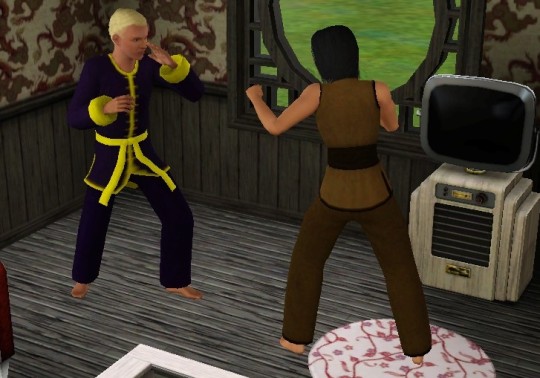
Here are a few photos of Eliseo's first of two trips to China where he was given special lessons in the martial arts skill by the local special merchant, Lee Yao. Lee directed him to spar twice with local Adaeze Min who has the level 8 brown belt. At this point, Eliseo was at level two, so he lost both matches to her but it helped him gain more experience.

After reporting into Lee, Eliseo was told to keep practicing his martial arts skills until he reached level 5 and then to meditate at the Scholar's Garden for two hours. He spent the next day practicing on the training dummies at the Academy and earned his third belt.

Eliseo managed to reach level 5 in the martial arts skill on the fifth day of his trip and then meditated at the Scholar's Garden. Once he reached the level of relaxation that allowed Eliseo to hover just above the ground and then he was able to zeneport himself to where Lee Yao was hanging out to report in. He was then directed to retrieve some special papers from tomb under the Resolute Fist Retreat. Eliseo was only able to explore the first part of the tomb as time ran out on this trip but was able to complete this mission when he returned a few sim days later.

Eliseo entering the first room inside the tomb of the Resolute Fist Retreat. The next photo shows him feeling around inside a hole in the wall for the switch to turn off one of the fire traps in the lower level while looking for the papers, Lee Yao sent him to find. After completing this mission, Eliseo helped the local relic merchant, Liang Yat Sen by collecting the materials he required to build a miniature replica of the First Emperor's tomb. This included some lapus lazuli gems, raw mercury and some assassin bugs to serve as guards for the tomb.

Just before we say our good byes to Eliseo and Jemina for this visit, here are two final photos of their youngest son, Jemiah wearing his new toddler clothes and in his high chair while waiting for someone to let him out. Jemiah's older brother, Elijah just became a teenager and will be having his teen photo taken next time when he gets some new clothes.


Aloha for now from Sunlit Tides and the Gary family hope that everyone has a wonderful week as the summer begins to wind down.
Eliseo & Jemina Gary
4 notes
·
View notes
Photo

#Sims 3#my sims#melissa costello#Liang Yat Sen#Romi Stone#Azariah Talbot#Aaliyah Zow#Elias Costello#hudson de Jager#willow adler#Shen Han
5 notes
·
View notes
Photo
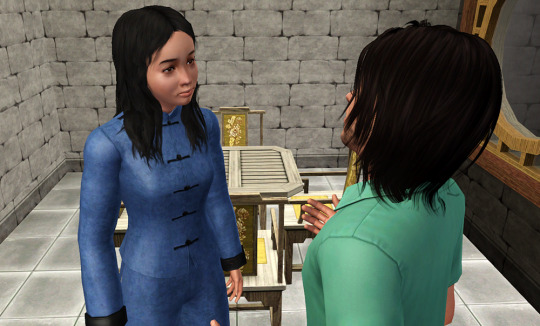


The third and last day of Jason’s first trip to Shang Simla was spent at the market and the (custom) festival lot in the Forbidden City, chatting up (AKA, mostly gossiping with) possible potential mates. Of them all, Biyu Shen (in the first pic above) seems the best prospect so far, but we’ll see what happens on future trips... I mean, Wu Xio in the third pic -- one of the single ladies of Shang Simla -- was chosen as the Special Merchant, so he’ll have a lot of contact with her while doing adventures...
#isla lycanus#midnight sun challenge#shang simla#i dig the look on liang yat sen's face#on the left side of the second pic
6 notes
·
View notes
Text
Writing Tips - Chinese Names!
If you want to read this elsewhere, read this on medium or go check out my IG at @annessarose_writes! On that account, I’m writing book reviews of AAPI fiction, posting quotes, and I’m hoping to post more tips and tricks to boost Chinese representation in fiction.
Okie. I see a lot of posts with “name suggestions” going around, and they’re pretty neat! But they’re also almost exclusively Eurocentric and I rarely come across one that includes any non-white names.
Which, well, I do admit they’re helpful. But also, when it’s the only thing that keeps showing up, that’s not very good. When I tried my hand at creative writing when I was 7/8/9 years old, those were the only lists I ever saw online.
I’m Chinese. I tried to give my ocs a Chinese name. I took a look at those lists, and saw not one non-Eurocentric name. So I turned all my ocs white as a small beginning writer because as a child, I didn’t know better, and I thought names like mine were weird and that white was the only normal.
And... jeez. If writers can’t even get our names right - if they can’t even look at our names without going “that’s weird/out of place” - well, no wonder we’re so alienated. Look. We’re human. We’re here. We belong in this world and we deserve to be seen in fiction, too.
So here’s a list of Chinese family names. To my sci-fi writer friends or to my fantasy-writer friends who wish to draw from eastern cultures to inspire their worlds, if you wish to do so, go right ahead! But do it respectfully and don’t appropriate/completely whitewash it (see: how George Lucas did a lot of his stuff in Star Wars…)
They’ll be formatted [Mando]/[canto]. This is not a comprehensive list by any means. This is just a quick shortlist with some of the most popular family names so you can use this for your Chinese characters.
Wang/Wong
Li/Lee
Liu/Lau
Chen/Chan
Huang/Wong
Yang/Yeung
Wu/Ng
Zhao/Chiu
Zhou/Chow
Xu/Tsui
Ma
Zhu/Chu
Hu/Wu
Gao/Ko
Lin/Lam
Zheng/Chen
Liang/Leung
Xie/Tse
Examples of full Chinese names (or names inspired by Chinese culture), pulled straight from The Poppy War Trilogy by R. F. Kuang (seriously, go read it, I think it’s the best trilogy I’ve ever read):
Fang Runin
Chen Kitay
Yin Nezha
Sring Venka
Other examples from famous figures, historical or modern:
Yen Ji-Dan (Donnie Yen)
Jāu Sīngchìh (Stephen Chow)
Sun Yat Sen
Chiang Kai Shek/Jiang Jie Shi
Mao Zedong/Mao Tse Tung
Zhou Enlai
Some notes about personal names:
Personal names can vary immensely. In large families, all the daughters will be granted one character and all the sons another character and the only thing that will vary is the last character. Here’s an example:
Let’s say you’re writing about a family with the name of Chow set in like the 1900s. If they have lots of children, all the sons could be named “Chow Hok ____” and all the daughters “Chow Yuk _____.” So you could totally have a Chow Yuk-Dang and Chow Yuk-Tung and Chow Yuk-Kei in one family.
Why do they do that? It’s because in these families, it is very possible to meet someone and have no idea that you’re related. The naming system is, in a way, a method of figuring out how to identify each other.
Some old/traditional families pull the middle character of the full name from an ancient poem or text. It’s a way of identifying generations — one generation will have one character in the poem, then the next generation, the next character, and so on. It’s a family legacy tradition. The names would be something like [Family name] [Poem word] [Other word]
As for new families — some of whom have moved/adapted to the western world but still have a hold on their Chinese roots — their method of naming could be a lot simpler. Some parents just choose a name because it sounds nice. They might not even know what the name means. Source: This was how I’m named.
Smaller families who are not so entrenched in tradition but live in China could very well choose their children’s names based on sayings, poems, and the like. Their child’s name could mean something like “hard-working” or “prosperous.”
Some other things to consider:
Some people use hyphens between the two characters of their personal name. Some do not, and combine it into one word when romanizing it. Some leave them as two separate words. It varies per person’s preference — all of these are valid.
When I say “family name,” I mean last name (I think this is fairly obvious).
Chinese names are formatted [family name] [personal name]. Family name is one character — personal name is usually two.
There are many other dialects that I have not listed here. I stuck to Mandarin and Cantonese as they’re the ones I’m most familiar with. It should be noted that I’m using Hong Kong Cantonese here.
If you’re writing a diaspora character, they’ll likely stick to the traditional western format of writing names — as in, they’ll probably use [first name] [middle name] [last name]. It is very, very realistic to have a character named “Dennis Heen Gwong Lee” or something.
Sources:
Having lived this.
My parents, from Hong Kong.
My grandmother, who comes from China and was a Chinese History/Culture teacher for decades.
#non sw#writing advice#writing tips#writing chinese characters#writing bipoc characters#bipoc representation#bipoc writers#chinese diaspora#chinese representation#chinese characters#the poppy war#long post#stop asian hate
630 notes
·
View notes
Photo

Figure 1. Liang Qichao’s Portrait
Graduate Research:
Chinese Scroll and Fan Work, Part 3
This week I am featuring a two-scroll couplet (figures 2 & 3) by the Chinese politician and master calligrapher Liang Qichao (1873-1929, see Figure 1). The couplet was mounted around 80 years ago, and is still in great condition. It is also one of the largest couplets in our Zhou Cezong Collection. Liang was an eminent calligrapher in modern Chinese history. For him, an important element of the arts was to express one’s disposition and personality, which was indeed resonant with his political principles. The characters were created in a sublime and fastidious fashion with evenly-divided space, which were the embodiments of Chinese standard writings, symbolizing his upright personality. Plus, in the center of a few characters, there were some barely visible X-shaped creases to help him organize his strokes along the axis and diagonal. This tiny detail is also the telling evidence of Liang’s rigor and thoughtfulness.
During the summer 1903, Liang Qichao, the second leading figure in Hundred Days’ Reform (1898), met U.S. President Theodore Roosevelt and Secretary of State John Hay in Washington. At that time, Liang was a wanted fugitive of the Qing court and by this time had spent five years in exile. During their tete-a-tete, John Hay prophesied that China was destined to be a great power, which has come to fruition in the past few years. It is important to note that John Hay’s clairvoyance was not ungrounded; instead, it was based on, at least partially, the unremitting efforts from Liang and his followers.
Before the Hundred Days’ Reform, Liang fervently promulgated the influence of Kang Youwei (1858-1927) in Shiwubao (Times News). However, after the reform was aborted, he developed a relationship with the revolutionary leader Sun Yat-sen and became acutely aware of the importance of democratization, and became the chief spokesman for the constitutionalists. Therefore, when Kang was still engaged in saving the monarchy, Liang publicly asked him to retire. In only a few short years, Liang made a radical turn-about by converting from Kang’s staunch acolyte to a vehement dissident. This kind of ideological reversal became a common feature of Liang’s political life. When asked about this predilection for change, he said “these turn-abouts were not driven by any personal interest or impetuosity; instead, they were always coherent with my ideology to be a patriot and save my country.” According to Chinese history scholar Joseph Levenson, Liang’s shifting positions can be explained as fluid adjustments to ever-changing external situations based on his own fixed internal conviction. Thus, Liang could be seen as a political iconoclast who refused to comply with convention, and followed his own disposition and choice.
On March 1927, in the same year that this couplet was produced, Liang’s mentor Kang passed away; later in June, Liang’s soul mate Wang Guowei (1877-1927) drowned himself in the Summer Palace. Two years later, Liang himself was dead at the age of 55. The text of the couplet reads: “spring orchids and autumn chrysanthemums will keep their essence in perpetuity. However, our life is just like the bright moon and the white dew, which will vanish in a trice,” and may reflect his lamentation at the death of his boon companions.

Figure 2. UWM Special Collection (cs 000008a): the first couplet

Figure 3. UWM Special Collection (cs 000008b): the second couplet
View more posts from the Zhou Cezong Collection of Chinese scroll and fan work.
– Jingwei Zeng, Special Collections graduate researcher
#graduate research#Chinese calligraphy#Chinese scrolls#Liang Qichao#Chinese politics#calligraphy#couplet#art history#Tse-Tsung Chow Collection#Zhou Cezong Collection#Jingwei
45 notes
·
View notes
Photo

Revisited by @lotusplum
RULES
⁘ Take a sim you could never forget from a while ago
⁘ Give makeover with all your new shiny cc and favourite skins
⁘ Don’t change the eye, hair, skin colour! Then it’s just a new sim
⁘ Tell us what & why you used to style your sims that way!
⁘ What changed?
I was tagged by @sammsims and @marceltorak - thankyouu! 💗 I had fun with this 😊
This is Sen Yat Sen, my favourite sim from my TS3 game. 😊 It was a really long legacy-style story save similar to Dynastia, that unfortunately got corrupted so bad that it became unplayable. 😔 Sen was a flirty, noncommital sim who got into heaps of trouble. xD I didn’t actually make the original Sen, he was the son of my founder and Liang Yat Sen from Shang Simla, but I did give him some CC as I always do. :P I was looking through my old screenshots for a good picture of him (because I can’t open the original game file anymore) and ughh all of my TS3 sims look so ugly to me now lol 😅 I’m not the best at CAS but I’m pretty happy with how the Sen remake turned out!
22 notes
·
View notes
Text



Some chistory memes I made last year with ibisPaint X because I'm too broke to use a better editing programme
These are based on my old Chinese history textbook. I'm finally free from this chistory hell now that I'm in Form 4
2nd meme explanation:
康有為 = Kang Youwei
孫中山 = Sun Yat-sen
Speaker = Liang Qichao
#chinese history#chinese history memes#history memes#world war 2#chinese nationalist party#second sino-japanese war#because Liang and Kang used to be buddies#whimedy rambling
0 notes
Text

Liang has dropped to his knees, Kristina is puzzled, what's going on here? Is this what it looks like?
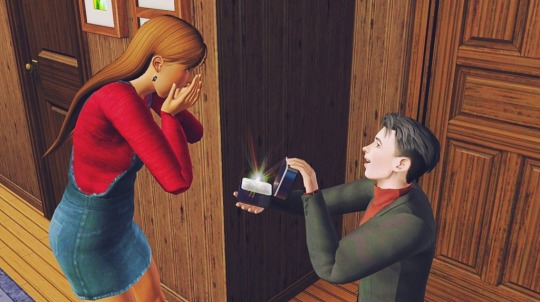
It is! Liang has proposed marriage to Kristina!
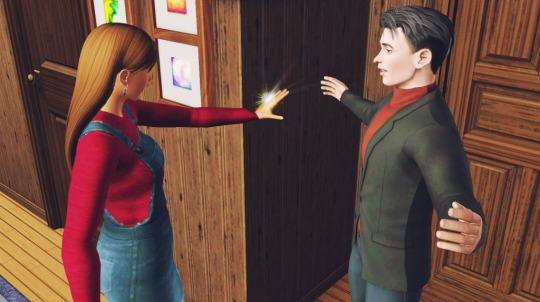
And Kristina naturally said yes.

Liang's proposal saved the day and is proof his love for her is true. Now Kristina can tell her parents and siblings both pieces of news: about her upcoming marriage and about the baby.
#the sims 3#sims 3 gameplay#ts3 gameplay#sims 3 simblr#appaloosa plains#the wassems#liang yat sen#los sims de ana#anamoon sims
19 notes
·
View notes
Photo


After days of training, Tyr finally mastered Martial Arts and must now win a Ranked Match. He easily defeats an overconfident Liang Yat Sen 2-0.
13 notes
·
View notes
Photo

I saw @utsoye post this a while back and thought it would be fun. Check out their original post.
#sims 3#my sims#elias costello#melissa costello#liang yat sen#azariah talbot#romi stone#aaliyah zow#hudson de jager#willow adler#shen han
4 notes
·
View notes
Text
On Hong Kong Comics (in Indonesian)
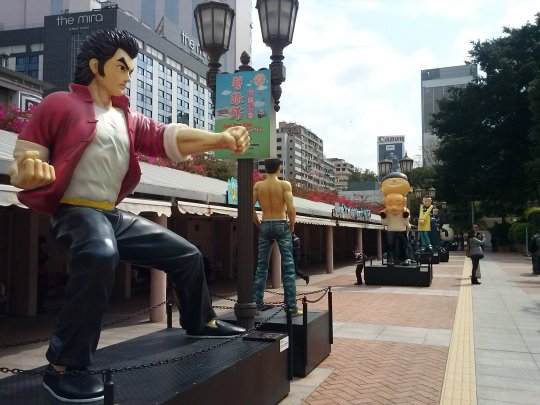
SEPTEMBER 2018
Komik Hong Kong di Indonesia: Kian Elit, Kian Sempit
Oleh Ade Irwansyah
Jika bertandang ke Hong Kong, sempatkanlah mampir ke Kowloon Park, sebuah taman dekat kawasan Tsim Sha Tsui yang sibuk. Di salah satu sudut taman terdapat surga kecil buat pecinta komik, terutama komik Hong Kong. Di area sepanjang 100 meter terdapat 30 patung karakter tokoh komik Hong Kong setinggi 1,8 hingga 3 meter berderet rapi.
Patung-patung yang dipamerkan di situ merentang dari karakter komik era 1960-an hingga dekade 2010-an. Di sana, Anda bisa puas berswa-foto dengan karakter Old Master Q, Wang Xiao Hu dari komik Long Hu Men, Dragon Lord, Cloud alias Angin dari komik Awan dan Angin (Wind and Cloud/Storm Riders) sampai yang kurang dikenal di sini seperti Miss 13 Dots, K si James Bond Hong Kong atau Ding Ding Penguin yang imut.
Tempat yang dinamakan Hong Kong Avenue of Comic Stars ini juga memuat sejarah perkembangan komik, pengaruhnya ke negara lain, termasuk Indonesia. Hong Kong Avenue of Comic Stars resmi dibuka September 2012 dengan tujuan merayakan budaya komik negeri bekas koloni Inggris itu.[1] Pembukaannya diresmikan Tony Wong Yuk-long, Presiden Hong Kong Comics and Animation Federation dan Gregory So Kam-leung, Menteri Perdagangan dan Pembangunan Ekonomi Hong Kong.
Tony Wong, tentu saja, legenda hidup komik Hong Kong. Ia layak disejajarkan dengan Osamu Tezuka di Jepang atau Stan Lee di Amerika. Seperti Stan Lee pula, Tony Wong beberapa kali muncul di film layar lebar. Ia pernah main film Project A (sebagai polisi), All’s Well, End’s Well (sebagai diri sendiri), New Police Story bareng Jacky Chan (sebagai kepala penjara) dan film adaptasi komik karyanya Dragon Tiger Gate (sebagai tabib Qi).[2] Membicarakan komik Hong Kong tak sahih tanpa menyebut Tony Wong. Namun, sejatinya pula, nama itu baru muncul sekitar akhir 1960-an di rimba persilatan komik di sana.
Bila ditelusuri muasal komik Hong Kong akan jauh sekali hingga ke masa Tiongkok kuno. Seperti Indonesia, orang China telah mengenal budaya gambar sejak ribuan tahun silam. Jejak lukisan tertua yang terselamatkan menunjuk ke masa abad 11 SM dan gambar-gambar di guci dari masa 5.000 sampai 3.000 SM. Di masa Dinasti Ming (1368-1644) muncul gambar dengan teknis kuas, sedangkan di masa awal Dinasti Qing (1643-1911) lahir gambar satir karya Zhu Da serta Luo Liang-feng sekitar 1771.[3]
Perkembangan gambar modern di China tak bisa dipisahkan dengan teknik cetak murah dari Barat. Teknik cetak ini membuat penerbitan koran dan majalah menjamur. Termasuk juga kartun dan karikatur yang muncul dalam koran dan majalah tersebut. Selain di media cetak, lahir juga apa yang dinamakan lianhuantu, buku cerita bergambar seukuran telapak tangan. Lianhuantu berformat 30 halaman. Setiap halaman berisi gambar dengan kotak keterangan di bawahnya. Komik format lianhuantu banyak diterbitkan di Shanghai awal abad ke-2o, serta diekspor keluar, di antaranya Hong Kong. Lianhuantu biasanya mengisahkan cerita kepahlawanan pahlawan atau legenda Tiongkok kuno.[4]
Di buku Hong Kong Comics (2002), Wendy Siuyi Wong menyebut komik Hong Kong pertama lahir di akhir abad ke-19 dan awal abad 20. Komik Hong Kong awal berjenis kartun satir dan karikatur. Majalah kartun satir pertama The China Punch terbit 1867 oleh seorang wartawan Inggris. Namanya sendiri diambil dari The Punch, terbitan Inggris dan mengadopsi karikatur politik, lustrasi dan kartun satir.
Siuyi Wong menganggap peran The China Punch sangat berarti karena mengenalkan kartun dan humor politik di Hong Kong.[5] Orang China pertama yang melukis kartun politik di Hong Kong adalah Tse Tsan-tai lewat karyanya The Situation in the Far East yang diterbitkan di Jepang. Tse pendukung Sun Yat-sen, Bapak Republik China. Ia menentang ambisi negeri asing di China. Lewat karyanya, ia bermaksud memberi kesadaran politik pada rakyat China.[6]
Dari Komik Humor ke Kungfu
Dalam bahasa China, komik disebut “manhua”. Sejumlah sejarawan meyakini kata itu dipinjam sejak permulaan abad ke-20 dari bahasa Jepang, manga yang berarti komik.[7] Menginjak 1920-an dan 1930-an, komik Hong Kong jarang memuat pesan politik. Topik yang sering diangkat kebanyakan tema sehari-hari. Selepas Perang Dunia II, komik jadi hiburan orang banyak. Komik strip muncul di setiap koran menggambarkan keseharian orang Hong Kong, dengan dialog sehari-hari dalam bahasa Kanton alih-alih Mandarin.[8]
Tahun 1950-an terbit Uncle Choi karya Hui Guan-man. Awalnya, kisah Paman Choi ini bernuansa humor, tapi belakangan jadi serius saat fokus cerita beralih soal kepahlawanan perang lawan Jepang. Di masanya, Uncle Choi jadi manhua terlaris di Hong Kong selama beberapa tahun, terbit selama satu setengah dekade. Komiknya dikatakan membawa pembaruan dengan gaya bertutur modern yang membedakan dengan model lianhuantu. Wendy Siuyi Wong mencatat manhua ini mengikuti tren—misal, ketika film spionase James Bond populer, sang tokoh jadi mata-mata--walau tak selalu disambut baik pembaca. Pada pertengahan 1970-an penerbitannya dihentikan.[9]
Sebelum 1970-an, manhua populer lainnya adalah Old Master Q karya Wong Chak yang terbit pertama tahun 1964. Formatnya komik empat panel yang mengisahkan petualangan kocak Old Master Q, pria tua berkumis tipis dan kostum tradisional China, bersama kawan-kawannya (“Big Dumb”atau “Big Potato” dan Mr. Chun). Manhua ini masih terbit hingga hari ini membuatnya jadi serial komik China paling lama.[10]
Yang kini juga jadi klasik di masa itu adalah Miss Thirteen Dot yang muncul di komik 13-Dot Cartoons karya Theresa Lee Wai-chun. Manhua ini disebut komik mainstream pertama yang menyasar pembaca cewek. Dikatakan, komik ini terinspirasi karakter Richie Rich. Ceritanya sendiri tentang petualangan seorang gadis putri jutawan.[11]
Seiring popularitas film kungfu akhir 1960-an dan tahun 1970-an yang antara lain melahirkan sosok Bruce Lee, imbasnya juga sampai ke manhua. Tahun 1971 terbit manhua kungfu berjudul Lee Siu-lung yang merupakan nama China Bruce Lee karya Seung-gun Siu-bo. Akhir 1960-an, tepatnya 1968, terbit Little Vagabond karya Tony Wong berkisah tentang petualangan dewa mabuk Vagabond.
Namun, tak sah mengulas manhua kungfu tanpa menyebut karya Tony Wong yang lain, Little Rascals (1970). Manhua ini mengisahkan petualangan preman-preman muda yang tinggal di pemukiman rumah susun (public housing) Hong Kong. Penggambaran adegan duel di komik ini begitu brutal dan mengundang kritik. Pemerintah lantas menerbitkan Indecent Publication Law tahun 1975 untuk mengatur gambar kekerasan vulgar di komik. Tony Wong patuh. Mengubah judulnya bernada positif Oriental Heroes (Long Hu-men). Tahun 1980-an, gaya gambar ala kartun di manhua ini berubah jadi lebih realis seiring popularitas The Chinese Hero karya Ma Wong-shing.[12] Pada akhir 2000, Wong me-remake Oriental Heroes dengan judul Xin Long Hu-men (New Oriental Heroes), memakai karakter yang sama seperti Wang Xiaohu, Wang Xiaolong dan Shi Heilong, tetapi dengan cerita yang lebih memikat dan adegan laga yang jauh lebih mantap.[13]
Pengaruh Komik Hong Kong di Indonesia
Di buku Komik Indonesia (pertama terbit edisi Prancis, 1976; edisi Indonesia, 1998) Marcel Bonneff mencatat komik silat kita bermula dari cerita silat (cersil) China. Ia tak menyebut komik melainkan karya sastra. Sebelum Perang Dunia II, surat kabar Melayu-Tionghoa Keng Po dan Sin Po menerbitkan seri silat China, yang kemudian terbit dalam bentuk buku. Setelah perang, Koran Star Weekly sangat diminati karena memuat cersil China.[14]
Dikatakan juga, cersil China di Indonesia dapat digolongkan ke dalam dua kelompok: cersil Tionghoa terjemahan buku yang diterbitkan di Hong Kong dan Taiwan serta gubahan penulis Indonesia keturunan Tionghoa. Yang disebut terakhir pelaku utamanya adalah Kho Ping Hoo alias Asmaraman.[15]
Dalam format komik, salah satu cersil pertama adalah kisah legenda Sie Djin Koei pada 1954. Komiknya tak mengadopsi model lianhuantu ala cergam Shanghai awal 1920-an, namun sudah sepenuhnya mengadopsi format komik modern dengan panel-panel terpisah dan balon kata.[16] Menginjak 1960-an terbit komik Buku Angin Kuning atau Pendekar Piatu yang mengambil ilham dari cersil China. Di pasar Indonesia, kata Bonneff, komik Hong Kong mendapat tempat sejajar dengan buku cerita.[17]
Yang turut pula berpengaruh pada komik silat kita adalah film kungfu Hong Kong, Taiwan dan samurai Jepang yang tayang di Indonesia di masa awal Orde Baru, akhir 1960-an dan awal 1970-an. Ganes TH yang mencipta Si Buta dari Gua Hantu dikatakan meniru komik Hong Kong, atau setidaknya film Jepang. Ganes membantah, mengatakan yang menginspirasinya adalah film Amerika tentang koboi buta yang beraksi dengan tongkat.[18]
Masa keemasan komik Hong Kong alias manhua di Indonesia berlangsung tahun 1990-an. Saat itu industri komik lokal tengah terpuruk oleh serbuan komik impor. Bila dekade sebelumnya orang Indonesia akrab dengan komik Eropa (Tintin, Asterix, Lucky Luke) dan Amerika (Batman, Superman dll), pada 1990-an mulai menjamur komik Jepang dan Hong Kong. Komik Jepang alias manga ditanadi oleh Candy Candy, Kung Fu Boy dan Doraemon yang diterbitkan Elex Media Komputindo milik Kompas-Gramedia; sedangkan manhua ditandai kehadiran dua karya Tony Wong: Tiger Wong dan Tapak Sakti juga oleh Gramedia. Tiger Wong judul aslinya Oriental Heroes versi 1980-an, sedangkan Tapak Sakti adalah Buddha’s Palm terbitan 1982.
Tahun 1990-an pemainnya bukan hanya kelompok usaha Kompas-Gramedia. Generasi ’90-an penggemar komik pasti akrab dengan manhua terbitan Garuda Mas. Penerbit ini menerbitkan banyak komik terjemahan Hong Kong macam Street Fighter, Crazy Guy, 3 Pendekar, Killer Sword dan macam-macam lagi. Di kebanyakan terbitan itu hanya disebut nama penulisnya, Chris Lau (Lau Ding-gin), padahal komik-komik itu dihasilkan macam-macam komikus: Fung Chi-ming, Li Chi-tat, dan lain-lain.
Jelang pertengahan 1990-an, Garuda Mas menghilang digantikan Rajawali Grafiti. Penerbit ini menerbitkan komik Hong Kong bajakan seperti Dragonman (Dragon Lord) hingga Awan dan Angin (Wind and Cloud) dan Pedang Bara (The Chinese Hero) dua karya legendaris Ma Wing-shing. Selain itu penerbit yang sama juga banyak menerbitkan manga terjemahan tak resmi seperti City Hunter, Dragon Ball, Ranma ½ hingga Tinju Bintang Utara (Fist of the North Star karya Burunson). Tidak sampai akhir 1990-an penerbit ini tak terdengar lagi kiprahnya.
Nasib Manhua Kini di Hong Kong dan Indonesia
Masa keemasan komik Hong Kong baik di negeri asalnya maupun Indonesia berlangsung hingga 1990-an. Di Indonesia malah rasanya masa emas itu lebih pendek: hanya setahun, tepatnya 1992 ketika Gramedia menerbitkan Tiger Wong dkk serta Garuda Mas membanjiri pasar dengan judul-judul beragam.
Penyebab kemunduran relatif sama: serbuan manga ke pasar. Di Hong Kong, dari segi format, manga yang terbit bulanan, hitam-putih, dicetak di kertas biasa dengan tebal 200-an halaman dianggap lebih memuaskan. Sedangkan manhua terbit mingguan, dicetak di kertas art-paper warna dengan tebal 30-40 halaman. Pembaca rupanya lebih memilih baca manga.[19]
Penyebab lainnya adalah abad digital yang mengubah kebiasaan orang membaca di kertas ke perangkat digital, baik komputer hingga handphone. Internet jadi biang keladi utama lantaran menyediakan komik hasil pindai (scan) gratis. Seorang pelaku bisnis komik dan animasi Hong Kong dikutip media setempat mengatakan pada 1995 hingga 2000 industri itu menghasilkan 700 juta dollar HK. Pada 2010, tinggal 300 juta dollar HK.[20]
Meski tak segurih era 1990-an bukan berarti industri manhua mati. Dari abad digital ini malah lahir komikus indie yang tak menggantungkan diri pada penjualan buku komik. Karena tak mengandalkan selera pasar pula, ekspresi kesenian mereka lebih personal. Yang lahir dari tangan mereka bukan lagi komik kung fu dengan jurus-jurus spektakuler, namun kisah keseharian dan keresahan hidup.
Yang patut disebut di sini antara lain How Blue was My Valley karya Yeung Hok-tak. Komik ini diterbitkan mandiri pada 2002. Kisahnya semacam memoar pengarangnya tentang kehidupan di rumah susun pemerintah (public housing) pada 1970-an. Gaya gambarnya berlainan sekali dengan manhua umumnya. Di komik ini manusia umumnya digambar seperti bayangan.[21]
Sayang beribu saying perkembangan komik Hong Kong kiwari tak sampai ke Indonesia. Manhua masih dijual di toko buku. Namun kebanyakan komik kung fu gubahan Tony Wong dan Andy Seto. Manhua Long Hu Men dan beberapa judul lain bisa ditemukan di toko buku kita. Kini pun yang tersisa tinggal manhua terbitan Gramedia. Sempat hadir Kumala Komik dengan judul-judul beragam, tapi menghilang juga tanpa kabar.
Manhua yang tersisa untuk dinikmati dalam bahasa Indonesia, selain hanya berjenis komik silat, juga harganya relatif mahal. Satu eksemplar dijual sekitar Rp 100 ribu. Bukunya memang tebal (hampir 200 halaman) dan dicetak di kertas art paper kinclong. Bandingkan dengan komik Jepang yang dijual di kisaran Rp 25 ribu.
Harga mahal itu menandakan yang disasar penerbit mereka yang berkocek tebal. Terutama generasi X dan milenial kelahiran awal 1980-an yang ketika kecil tumbuh membaca komik Tiger Wong dan Tapak Sakti yang dijual Rp 2.000 pada 1990-an. Mereka kini memang telah berada di puncak karier masing-masing, berpenghasilan berlebih. Membaca Long Hu Men kini buat mereka punya nilai nostalgis.
Bahaya dari strategi pasar model begini adalah penerbit tak hendak menyasar pembaca baru: mereka yang tak mampu beli komik seharga Rp 100 ribuan. Ini membuat pasar komik Hong Kong jadi elitis dan sempit. Amatilah toko buku. Manhua menyempil di rak sempit, terdesak puluhan judul manga. Begitulah nasibnya kini.***
[1] "Avenue of Comic Stars opens in Kowloon Park with statues of characters", South China Morning Post, 29 September 2012, dengan URL: https://www.scmp.com/news/hong-kong/article/1049718/avenue-comic-stars-opens-kowloon-park-statues-characters (diakses 29 Agustus 2018).
[2] Lihat Long Hu Men Guidebook, PT Gramedia, Jakarta, 2013, hal. 87.
[3] Lihat Wendy Siuyi Wong, Hong Kong Comics: A History of Manhua, Princeton Architectural Press, New York, 2002, hal. 11.
[4] Ibid, hal.103.
[5] Ibid, hal. 12-13.
[6] Ibid.
[7] Ibid, hal. 11.
[8] Sally Gao, “An Introduction to Hong Kong Comics”, Culture Trip, 29 Oktober 2016, dengan URL: https://theculturetrip.com/asia/hong-kong/articles/an-introduction-to-hong-kong-comics/ (diakses 6 September 2018).
[9] Lihat Wendy Siuyi Wong, Hong Kong Comics…,hal. 107.
[10] Ibid, hal 67 dan lihat Sally Gao,…
[11] Wendy Siuyi Wong, Hong Kong Comics…,hal. 73.
[12] Ibid, hal. 115.
[13] Lihat Long Hu Men Guide Book… hal. 3.
[14] Marcel Bonneff, Komik Indonesia, Cet. 3, Kepustakaan Populer Gramedia, Jakarta, 2008, hal. 115.
[15] Ibid.
[16] Ibid, hal. 118.
[17] Ibid, hal. 120.
[18] Ibid.
[19] Lihat “Japanese Elements in Hong Kong Comics: History, Art, and Industry”, dimuat di URL: http://www.cuhkacs.org/~benng/Bo-Blog/read.php?456 (diakses 6 September 2018)
[20] Lihat Nan-Hie In, "Hong Kong’s comics industry is proverbially in the shreds. The biggest saboteur? The internet", Coconuts Hong Kong, 30 Agustus 2014, dengan URL: https://coconuts.co/hongkong/features/hong-kongs-comics-industry-proverbially-shreds-biggest-saboteur-internet/ (diakses 6 September 2018).
[21] Lihat Jeffrey Mather (2017), “Hong Kong Comics: Reading the Local and Writing the
City”, Wasafiri, 32:3, 79-86, DOI: 10.1080/02690055.2017.1322325, di URL:https://doi.org/10.1080/02690055.2017.1322325 (diakses 6 September 2018).
CATATAN: Esai ini adalah versi belum diedit dari esai yang dimuat Jurnal Ruang dengan URL: https://jurnalruang.com/read/1537275375-komik-hong-kong-kian-elit-kian-sempit.
0 notes
Text
A Look Into Tomorrow’s Hard Disk
Data is best stored on hard disks. It is easier to access when data stored in a hard disk. Of course, they can also be stored online. While there is nothing wrong with storing data online, you would have to rely on the internet to access your files.
With a hard disk, there’s no need to rely on the internet to access your files. Since it’s very convenient to use, a hard disk with huge data storage capacity is always in demand. The thing is, a hard disk with huge data capacity might not be portable. If it’s not portable, then it won’t be that convenient to take everywhere.
Ideally, the size of a hard disk should remain small as its data storage capacity increases. At the moment, that kind of hard disk is a myth. Hopefully, tomorrow, it becomes a reality. Here's a look at tomorrow’s hard disk.
A recent breakthrough discovery of the world's first high-temperature single-molecule magnet (SMM) opens doors to future exciting developments in massive storage capacity increase in hard disks without increasing their physical size.
Before the publication of the study Magnetic Hysteresis up to 80 Kelvin in a Dysprosium Metallocene Single-Molecule Magnet led by Professor of Chemistry Richard Layfield at the University of Sussex in England, it was only possible to synthesize single-molecule magnets with blocking temperatures that were reached by cooling with considerable expensive and scarce liquid helium.
The team at the University of Sussex in collaboration with Sun-Yat Sen University in China and the University of Jyväskylä in Finland, reported a new single-molecule magnet (SMM) which is a type of material that retains magnetic information up to a characteristic blocking temperature.
(Via: https://interestingengineering.com/first-high-temperature-single-molecule-magnet-can-revolutionize-hard-disk-storage-capacity)
The characteristics of the SMMs are paving way to a very tiny device that could store huge data.
SMMs are molecules with the characteristic of remembering the direction of a magnetic field that has been applied to them over relatively long periods of time once the magnetic field is switched off. This makes possible to write information into molecules.
"Our new result is a milestone that overcomes a major obstacle to developing new molecular information storage materials and we are excited about the prospects for advancing the field even further," said Professor Layfield.
(Via: https://interestingengineering.com/first-high-temperature-single-molecule-magnet-can-revolutionize-hard-disk-storage-capacity)
The fact that digital data was stored in the magnetic field of a single atom is a very significant step in revolutionizing the hard disk.
Single-molecule magnets have the potential for important applications such as high-density digital storage media as well as parts of microprocessors in quantum computers.
(Via: https://interestingengineering.com/first-high-temperature-single-molecule-magnet-can-revolutionize-hard-disk-storage-capacity)
This magnetic breakthrough is something to look forward to since we’re always looking for ways and means to store huge data in just one place.
The single-molecule magnet that is set to play such an important role in the future of quantum computing was the result of the co-ordinated effort of three universities.
The synthetic work and characterization of the prepared compounds was carried out by Professor Layfield’s research group while magnetic measurements were performed at Sun Yat-sen University under the leadership of Professor Ming-Liang Tong. Postdoctoral researcher Akseli Mansikkamäki carried out theoretical calculations and analyses at the Department of Chemistry of the University of Jyväskylä.
The study also provides insights and a roadmap on how to further improve the magnetic properties of SMMs and how to bring exciting technological applications including quantum computing closer to reality.
(Via: https://interestingengineering.com/first-high-temperature-single-molecule-magnet-can-revolutionize-hard-disk-storage-capacity)
Huge data capacity in a tiny device is something to look forward to. However, one thing is constant with any kind of hard disk. Whether it’s tiny or big, a hard disk can fail.
A hard disk failure is something we all don’t want to deal with. However, it is actually one of the easiest computer problems to solve. There are https://www.harddrivefailurerecovery.net/hard-drive-failure-solutions/ that can help save the day.
A Look Into Tomorrow’s Hard Disk was first published to HDRA
from Hard Drive Recovery Associates - Feed https://www.harddrivefailurerecovery.net/a-look-into-tomorrows-hard-disk/
A Look Into Tomorrow’s Hard Disk Read more on: Alain Gonza
from https://alaingonza.com/2019/05/18/a-look-into-tomorrows-hard-disk/
0 notes
Text
A Look Into Tomorrow’s Hard Disk
Data is best stored on hard disks. It is easier to access when data stored in a hard disk. Of course, they can also be stored online. While there is nothing wrong with storing data online, you would have to rely on the internet to access your files.
With a hard disk, there’s no need to rely on the internet to access your files. Since it’s very convenient to use, a hard disk with huge data storage capacity is always in demand. The thing is, a hard disk with huge data capacity might not be portable. If it’s not portable, then it won’t be that convenient to take everywhere.
Ideally, the size of a hard disk should remain small as its data storage capacity increases. At the moment, that kind of hard disk is a myth. Hopefully, tomorrow, it becomes a reality. Here's a look at tomorrow’s hard disk.
A recent breakthrough discovery of the world's first high-temperature single-molecule magnet (SMM) opens doors to future exciting developments in massive storage capacity increase in hard disks without increasing their physical size.
Before the publication of the study Magnetic Hysteresis up to 80 Kelvin in a Dysprosium Metallocene Single-Molecule Magnet led by Professor of Chemistry Richard Layfield at the University of Sussex in England, it was only possible to synthesize single-molecule magnets with blocking temperatures that were reached by cooling with considerable expensive and scarce liquid helium.
The team at the University of Sussex in collaboration with Sun-Yat Sen University in China and the University of Jyväskylä in Finland, reported a new single-molecule magnet (SMM) which is a type of material that retains magnetic information up to a characteristic blocking temperature.
(Via: https://interestingengineering.com/first-high-temperature-single-molecule-magnet-can-revolutionize-hard-disk-storage-capacity)
The characteristics of the SMMs are paving way to a very tiny device that could store huge data.
SMMs are molecules with the characteristic of remembering the direction of a magnetic field that has been applied to them over relatively long periods of time once the magnetic field is switched off. This makes possible to write information into molecules.
"Our new result is a milestone that overcomes a major obstacle to developing new molecular information storage materials and we are excited about the prospects for advancing the field even further," said Professor Layfield.
(Via: https://interestingengineering.com/first-high-temperature-single-molecule-magnet-can-revolutionize-hard-disk-storage-capacity)
The fact that digital data was stored in the magnetic field of a single atom is a very significant step in revolutionizing the hard disk.
Single-molecule magnets have the potential for important applications such as high-density digital storage media as well as parts of microprocessors in quantum computers.
(Via: https://interestingengineering.com/first-high-temperature-single-molecule-magnet-can-revolutionize-hard-disk-storage-capacity)
This magnetic breakthrough is something to look forward to since we’re always looking for ways and means to store huge data in just one place.
The single-molecule magnet that is set to play such an important role in the future of quantum computing was the result of the co-ordinated effort of three universities.
The synthetic work and characterization of the prepared compounds was carried out by Professor Layfield’s research group while magnetic measurements were performed at Sun Yat-sen University under the leadership of Professor Ming-Liang Tong. Postdoctoral researcher Akseli Mansikkamäki carried out theoretical calculations and analyses at the Department of Chemistry of the University of Jyväskylä.
The study also provides insights and a roadmap on how to further improve the magnetic properties of SMMs and how to bring exciting technological applications including quantum computing closer to reality.
(Via: https://interestingengineering.com/first-high-temperature-single-molecule-magnet-can-revolutionize-hard-disk-storage-capacity)
Huge data capacity in a tiny device is something to look forward to. However, one thing is constant with any kind of hard disk. Whether it’s tiny or big, a hard disk can fail.
A hard disk failure is something we all don’t want to deal with. However, it is actually one of the easiest computer problems to solve. There are https://www.harddrivefailurerecovery.net/hard-drive-failure-solutions/ that can help save the day.
A Look Into Tomorrow’s Hard Disk was first published to HDRA
from Hard Drive Recovery Associates - Feed
via https://www.harddrivefailurerecovery.net/a-look-into-tomorrows-hard-disk/
The following article A Look Into Tomorrow’s Hard Disk was initially published to Owen Strachan
from https://owenstrachan.com/a-look-into-tomorrows-hard-disk/
0 notes
Text
Call for Papers: The 4th East China University of Science and Technology – University of San Francisco International Symposium
Call for Papers
4th East China University of Science and Technology – University of San Francisco International Symposium
Date: May 25-26, 2019
Location: Shanghai, P.R. China
Currently, the international economic structure is undergoing tremendous changes. On one hand, anti-globalization sentiment and subsequent protectionism keep rising across the developed economies. The protectionist trade policies of United States, and the China-US trade war in particular, are causing the world economic system to undergo turbulent adjustments and hindering foreign direct investment from emerging market countries.
On the other hand, emerging market countries have also strengthened supervision of transnational capital flows to avoid capital loss and cross-border arbitrage activities. These factors together determine that investors from emerging market countries cannot follow the conventional model of the past and instead, must search for a new path for future investment.
Take China as an example. As the Chinese government tightens its control over overseas investment, China’s outbound foreign direct investment in 2017 fell by 30% from the previous year. Under the influence of trade protection policy, the Committee on Foreign Investment in the United States (CFIUS) rejected more than $2 billion in acquisitions in the first five months of 2018.
Affected by the above factors, Chinese companies sold about $9.6 billion of US assets in the first five months of 2018. The total investment in the US was only $1.8 billion, down 92% from the same period in 2017 (Rhodium Group, 2018). The frustration over investment in the United States and the government’s control over cross-border investment have led Chinese companies to seek new investment opportunities. According to the statistics of the Ministry of Commerce of China, in the first half of 2018, the value of Chinese companies’ mergers and acquisitions in Europe increased by 40%, which is 4.5 times the amount of US mergers and acquisitions.
At the same time, Chinese companies’ M&A transactions in the “One Belt One road” countries amounted to 43 cases, accounting for 20.8% of the total transactions in the same period; the newly added investment in the “One Belt One road” countries was $7.4 billion, rising 12% year-on-year and reaching a total of 12.9% in the same period. The direction of China’s foreign direct investment is quietly changing.
Similarly, in the context of global change, other emerging market economies are also facing the same foreign direct investment choices. So, what changes have occurred in foreign direct investment in emerging market countries, industries and enterprises? What lies behind these changes? How should the strategy of foreign direct investment in emerging market countries be adjusted? What will be the direction of foreign direct investment in emerging market countries in the future? These issues need to be extensively discussed and answered.
Given these gaps, the Institute of Management and Organization, School of Business, ECUST, together with the Chinese Business Studies Initiative (CBSI), School of Management at University of San Francisco, will launch their 4th international symposium on May 25 – 26, 2019. This symposium will provide a platform for sharing ideas and insights among scholars and business executives in terms of current and future research on these issues. During this two-day symposium, various sessions including paper presentations, keynote speeches, and academic and industry panel discussions will be organized. Scholars, business executives, entrepreneurs, and policy-makers are invited to join us in the discussion.
Theme:
This symposium aims to provide a platform for both scholars and practitioners to share ideas. Any topics related to foreign direct investment and emerging market multinationals are encouraged and appreciated here.
Keynote Speakers (updating…)
Mike W. Peng University of Texas at Dallas
Submission Guidelines
We invite scholars to present research and identify questions that concern foreign direct investment from emerging market multinationals. Your submission must include a 1-2 page extended abstract with the following components (where relevant):
Purpose
Design/methodology/approach
Findings
Research limitations/implications
Practical implications
Important Dates
Symposium Date: May 25 and 26, 2019
Registration Deadline: April 30, 2019
Registration fee: ¥600 or US$100 (¥400 or US$ 60, for students)
Account payee: 033296-08017003862
Payee: East China University of Science and Technology
Bank of deposit: Caoxi branch, Shanghai, The Agricultural Bank of China
Remittance remark:Name+University+School(Please be sure to indicate!)
Contact Information:
Abstracts should be submitted to: [email protected]. For additional conference information and questions, please [email protected].
Conference Chairs
Haifeng Yan East China University of Science and Technology
Xiaohua Yang University of San Francisco
The Planning Committees (in alphabetical order of surnames)
Taotao Chen Qsinghua University Manli Huang South China University of Technology Donghong Li Qsinghua University Lei Li University of Nottingham Ningbo China Weiwen Li Sun Yat-Sen University Yu Li University of International Business and Economics Jane W. Lu China Europe International Business School Ping Lv University of Chinese Academy of Sciences Gloria Ge Griffith University Business School Yimin Wang Shandong University Bing Wu East China University of Science and Technology Jianzu Wu Lanzhou University Xianming Wu Wuhan University Hongming Xie Zhejiang University of Technology Xiaojun Xu Fudan University Gracy (J.Y.) YANG University of Sydney Xiao Zhang Nanjing University Qinqin Zheng Fudan University
Program Chairs
Bing Wu East China University of Science and Technology
Liang Wang University of San Francisco
Program Committees
Yi Ke East China University of Science and Technology
Haibo Zhou East China University of Science and Technology
Qihu Wang East China University of Science and Technology
Qiong Wu East China University of Science and Technology
Molin Wang East China University of Science and Technology
Roger Chen University of San Francisco
Matt Monnot University of San Francisco
from Call for Papers: The 4th East China University of Science and Technology – University of San Francisco International Symposium
0 notes